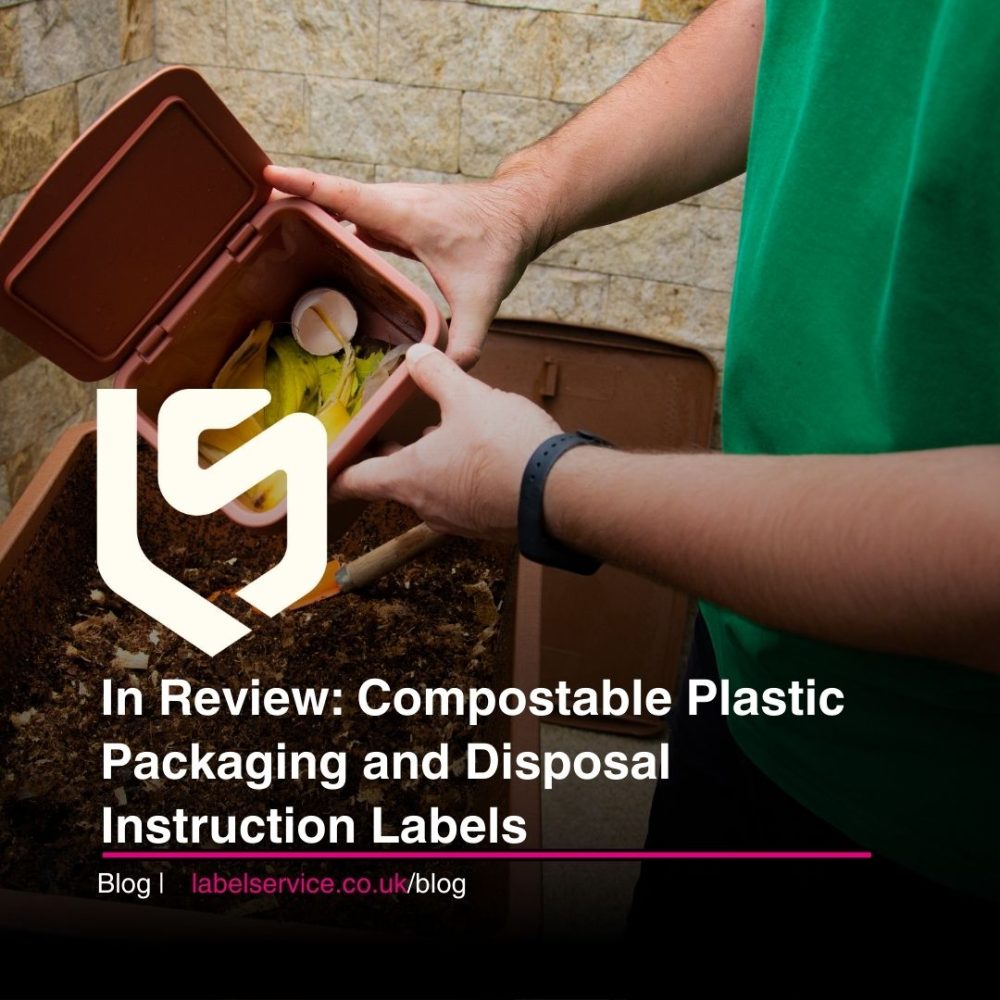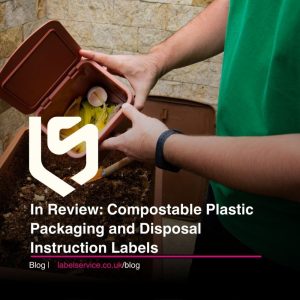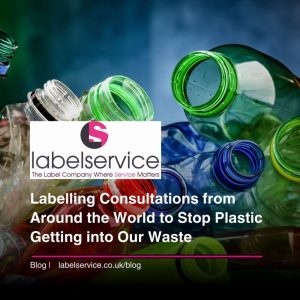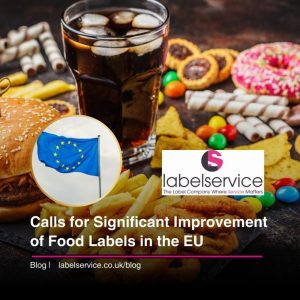Compostable plastics are gaining traction as a potential solution to the global plastic waste crisis, particularly for reducing waste from single-use packaging. Despite their promise, the bioplastics market remains a small fraction—less than 1%—of the 390 million tons of plastics produced globally. However, this share is steadily increasing as bioplastics find new applications. Global production capacity for biodegradable plastics is projected to grow from about 2.2 million tonnes in 2022 to approximately 6.3 million tonnes by 2027 (European Bioplastics, 2022a). In the UK, however, significant challenges persist.
The sector is often described as the “Wild West” of packaging due to its lack of regulation. Standards and certifications for compostable plastics are inconsistent, and there are few rules governing how they are labelled and marketed. This regulatory gap allows manufacturers and suppliers significant leeway in promoting these materials. Compounding the issue, effective systems for the collection, sorting, and processing of compostable plastics are scarce in the UK. As a result, most compostable plastics end up in landfills or incinerators, undermining environmental claims and leading to widespread confusion and scepticism.
Another challenge lies in the interchangeable use of terms such as “bioplastic,” “compostable,” “biobased,” and “biodegradable.” These terms have distinct meanings and subtle differences, yet they are often conflated, making it difficult to evaluate the evidence or understand their implications. In this context, we use definitions from European Bioplastics (2022b) and the EU, which distinguish between compostable, biobased, and biodegradable plastics (European Commission, Directorate-General for Research and Innovation et al., 2020; European Commission, 2022). Clarifying these terms is essential for fostering transparency and trust in this emerging sector.
“Biobased” describes the source of the material at the start of the lifecycle of the plastic. Biobased plastics are fully or partially made from biological resources, rather than fossil raw materials. Biobased plastics are not necessarily biodegradable or compostable, terms which refer to how the material degrades at its end of life. The main difference between “biodegradable” and “compostable” in the context of plastic is that biodegradable plastic can take an undetermined time to break down. In contrast, compostable plastic must degrade, within a given timeframe, under specified composting conditions. There are different nationally and internationally accredited certifications assessing the credentials of compostable packaging.
For the scope of this study, we are concerned with “compostable” plastics as “compostable” refers to a specific type of material that needs to be managed through specific routes. It thus allocates a clearer role to citizens as people responsible for sorting and disposing of waste through specific waste management routes, e.g., organic waste collection services.
Compostable plastics could be part of a sustainable UK packaging system; however, this would require UK citizens to adopt the appropriate waste management behaviours that lead to the materials being composted, i.e., putting those in the correct bin for processing. Incorrect disposal offsets any of the potential environmental benefits of compostable plastic packaging. As compostable plastics are relatively new in terms of an integrated UK waste management strategy, there is little research to inform the design of behaviour change interventions to increase appropriate waste management of these materials.
Prior research on behaviour concerning compostable plastic disposal has largely focussed on the confusion surrounding “biobased”, “biodegradable”, and compostable plastics, identifying the need for clear, explicit, and instructive messaging on packaging. Evidence suggests that “biodegradable” is a confusing term as it offers little guidance on how to dispose of items. Studies in Germany and Netherlands show this confusion leads to incorrect disposal in practice. In the German study, the majority of participants (63%) disposed of this type of packaging in recycling rather than with organic waste, the correct option for that context. Even amongst those who observed the logos and disposal instructions on the packaging, these items were incorrectly disposed of. The reasons provided for their disposal decisions included the messaging being unclear or that they did not believe that plastic water bottles could be compostable. The Dutch study showed that only 35% of participants observed the logos on the packaging meant to communicate information about product biodegradability. Even amongst those who did observe the logos, these materials were usually incorrectly placed in recycling rather than residual waste, the correct option for that context.
While the evidence is clear that citizens struggle to dispose of these items correctly, it is unclear which types of messaging might promote desired disposal. These studies only tested one type of packaging format: plastic water bottles in the German study and plastic cups in the Dutch study. The material more commonly used for the production of bottles or containers for beverages is polyethylene terephthalate (PET), and as PET is a recyclable material, the recycling bin would be the right bin. It is therefore important to conduct further studies testing a variety of packaging formats to minimise the potential confounds of past associations with a particular type of packaging.
An intervention aimed at promoting the correct disposal of compostable plastics within a UK implementation context has been developed but has yet to be evaluated for effectiveness in changing behaviour. This intervention consists of disposal instruction labels aimed at addressing one of the key barriers to correct disposal—not knowing which bin is the correct one for disposal. Readers are referred to this paper for further detail on the rationale and processes involved in the design of these disposal instruction labels. The present study aimed to evaluate the impact of disposal instruction labels on the disposal of a range of different compostable plastic packaging formats.
At the time of this study in 2023, the UK Government was consulting on new mandatory labelling for packaging as part of the Extended Producer Responsibility Scheme reforms. Mandatory labelling aims to provide citizens with clear, binary instructions on what can and cannot be recycled: “recycle” or “do not recycle”. As compostable plastics are not deemed “recyclable” (as they are not designed to be mechanically recycled but to break down in specific composting conditions), the current plan is to label these, from 2024 onwards with “do not recycle” so they are disposed of with general waste. Most compostable plastic materials (e.g., PLA used in food packaging) would not degrade outside of an industrial compost facility as they have different material properties and requirements for processing compared to traditional fossil-based recyclable plastics (e.g., PET commonly used in single-use plastic water bottles). This binary mandatory labelling policy is significant because, from 2024 onwards, the UK government also aims to roll out nationwide food waste collection services. There are concerns that food waste collection services may become overwhelmed with large volumes of compostable plastic packaging waste that are not currently able to be processed by the majority of UK waste processing facilities. While there is an understanding amongst government and industry that collecting and processing these materials via food waste is likely to be the desired end-point, this is an anticipated future scenario once other aspects of the compostable plastics system improve.
Mandating the use of “do not recycle” to direct compostable plastics to general waste raises questions about behaviour change. To enable correct practices, it is necessary to gather information about what UK citizens are currently doing with compostable plastics without government-mandated disposal instruction labels. This would form a baseline for evaluating the impact of the disposal instruction “do not recycle”. As “recycle”/“do not recycle” is a binary messaging system that was designed for a two-bin scenario (recycling and general waste), it is empirically unknown how effective “do not recycle” will be once there are three mainstream options for the disposal of waste (recycling, general waste, and food waste). It is unclear how obvious the general waste bin will be as the disposal option for compostable plastics.
To prepare for an ideal future scenario where compostable plastics are disposed of with food waste (so they can be composted), the UK industry and government are discussing the potential implementation of a new disposal instruction logo indicating “compostability”. However, the UK government have been clear that this would only be used to label compostable plastics in the instance that there is a strong, evidence-based case for this scenario. For example, this will require sound evidence that there is adequate infrastructure in place to appropriately manage compostable plastics and evidence that compostable plastics provide ecological or agricultural benefits to soils or digestate when properly broken down. Therefore, there is also a need to understand which types of logos and disposal instructions might be most effective to denote the disposal of compostable waste with food waste to support policy decision-making in this area. To this end, the current study has four research questions:
- In a three-bin scenario (food waste, general waste, and recycling), which bin do citizens put various types of compostable plastic packaging in when there is no disposal instruction?
- In a three-bin scenario (food waste, general waste, and recycling), is “do not recycle” an effective disposal instruction for getting citizens to dispose of compostable plastic waste with general waste?
- In a three-bin scenario (food waste, general waste, and recycling), which disposal instruction (“compost”, “compost with food waste”, “put with food waste”, and “recycle with food waste”) is most effective at getting citizens to put compostable plastic packaging with food waste?
- Which potential alternative disposal instruction logos do citizens prefer for compostable packaging and why?
Ethical approval for the study was received from UCL (project ID: CEHP/2020/579, data protection: Z6364106/2022/03/63). The study was built on Gorilla and piloted with a sample of university staff and students before data collection for usability and accessibility. Participants accessed the study via an online web link, which took approximately 10 min to complete. Informed consent was obtained before any data collection. Data collection occurred between the 14th and 28th of November 2022.
Participants completed 16 trials in total. Each trial consisted of sorting stimuli into one of three bins: food waste, recycling, or general waste (if the packaging had multiple parts, each part had to be sorted separately). Eleven trials consisted of sorting compostable packaging formats. Five trials consisted of sorting distractor packaging formats. The order of trials was counterbalanced to minimise order effects. Participants subsequently completed a survey answering questions about their demographics and logo preferences.
Participants selected their preferred logo on the basis that it was the clearest to understand. However, there was variation between logos in terms of why it was perceived this way (see Table 6). Logo 15 was valued for its inclusion of a range of organic waste materials, instructive imagery, and avoidance of associative symbols. Logo 5 was valued for its use of associative symbols, which were deemed intuitive and logical. Nonetheless, across both logos, participants felt that a logo alone would be insufficient as a disposal instruction strategy and emphasised the importance of written disposal instructions to reduce any potential confusion.
This study aimed to evaluate disposal instruction labels for their effectiveness in promoting the desired disposal of compostable plastic packaging. With no disposal instructions, citizens disposed of compostable plastic packaging using intuitive logic. For instance, items that “look” compostable were put in food waste, items that “look” recyclable were put in recycling, and items that “look” like general waste were put in general waste. These automatic pathways may nonetheless be disrupted with the appropriate disposal instructions. While “do not recycle” may currently work to divert some types of compostable plastic packaging to general waste, it may not work for all, especially items with a common practice of being compostable, e.g., tea bags.
Disposal instructions that explicitly mentioned food waste (e.g., “compost with food waste” vs. “compost”) led to a statistically higher rate of disposal of compostable plastics in the food waste bin. Citizens valued the depiction of simple yet comprehensive, instructive, and explicit symbols in a logo for compostable waste, i.e., an arrow pointing into a bin, avoidance of associative symbols such as variations of the recycling chasing arrows symbol and depiction of a variety of different organic waste items that one can put in a food bin for local collection. Taken together, findings are in line with a substantial body of research showing that citizens have strong preferences for disposal instructions and logos that are clear, directional and explicit. Additional in-person studies and natural experiments in this area can improve the conclusiveness of findings.

















